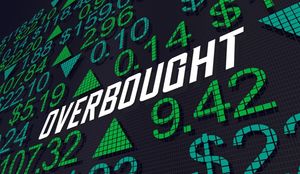
The cryptocurrency market stands at the precipice of a transformative era, as a select group of altcoins are now positioned for expedited Exchange-Traded Fund (ETF) listings. Following the landmark approvals of Bitcoin (BTC) and Ethereum (ETH) ETFs, regulatory bodies have streamlined the path for other digital assets, signaling a maturing market ready for broader institutional integration. This development promises to unlock billions in new capital, democratize access to diverse digital assets, and fundamentally alter the investment landscape for both traditional finance and the burgeoning crypto industry.
Investors and market analysts are buzzing with anticipation as a clear pathway for altcoin ETFs has emerged. This new regulatory environment is not merely an incremental step but a significant leap, potentially paving the way for mainstream investors to access a wider array of digital assets through regulated and familiar investment vehicles. The implications are profound, suggesting a future where altcoins are increasingly viewed as legitimate, investable assets rather than niche speculative plays.
The Regulatory Floodgates Open: Why Expedited ETF Listings Matter
The landscape for cryptocurrency ETFs has undergone a seismic shift, primarily driven by the U.S. Securities and Exchange Commission (SEC)'s recent approval of generic listing standards for crypto ETFs. This pivotal decision has dramatically streamlined the approval process, effectively reducing the maximum review timeline for eligible ETFs from a protracted 240 days to a mere 75 days. This regulatory evolution removes the bottleneck of lengthy, individualized reviews, setting the stage for a potential surge in altcoin ETF approvals.
At the heart of this expedited pathway are standardized criteria that a cryptocurrency must satisfy to qualify for listing. Specifically, an altcoin must meet one of three conditions: it must be traded on a market connected to the Intermarket Surveillance Group (ISG), have a futures contract with at least six months of trading history on a Commodity Futures Trading Commission (CFTC)-regulated market, or be included in an existing ETF with at least 40% exposure trading on a national exchange. These clear guidelines provide a blueprint for asset managers seeking to launch new crypto investment products, and for investors seeking diversified exposure.
Several key players are at the forefront of this movement. Asset managers like Grayscale, which already operates a Digital Large Cap Fund (including Bitcoin, Ethereum, XRP, Solana, and Cardano), are well-positioned to leverage these new standards. The recent debut of specific altcoin ETFs for XRP (XRP) and Dogecoin (DOGE) through alternative pathways, such as the Investment Company Act of 1940, further underscores the industry's ingenuity in navigating regulatory frameworks. This accelerated 75-day review period, even if sometimes necessitating indirect holdings via Cayman Islands subsidiaries, showcases a proactive approach to meeting investor demand. While the SEC maintains a cautious stance on certain aspects like asset custody and staking mechanics, over 90 crypto ETF applications, encompassing a wide range of altcoins including Solana (SOL), and Litecoin (LTC), are currently under review. This flurry of activity highlights the industry's readiness to embrace this new era of regulated crypto investment products.
The Altcoin Vanguard: Identifying the Next ETF Frontrunners
The expedited ETF listing criteria have sharpened the focus on a specific cohort of altcoins, positioning them as prime candidates for institutional investment. These tokens, already possessing significant market capitalization, robust ecosystems, and a degree of regulatory scrutiny, are expected to lead the charge in the next wave of crypto ETFs.
Bitcoin (BTC), while technically an altcoin in the broadest sense of being an alternative to fiat, already has spot ETFs approved and serves as the trailblazer, setting the precedent for others. Its established futures market on regulated exchanges was a critical factor in its initial ETF approvals.
For other altcoins, the qualification hinges on meeting the SEC's outlined criteria. Dogecoin (DOGE) has already seen the debut of an ETF, likely leveraging the alternative pathway via the Investment Company Act of 1940 due to its widespread trading and recognition. Solana (SOL), with its rapidly growing ecosystem and increasing institutional interest, is a strong contender. Its burgeoning trading volume and increasing presence on regulated platforms suggest it could soon meet the "traded on an ISG market" criterion or see a futures market develop. Similarly, Litecoin (LTC), often dubbed "digital silver," has a long-standing presence in the market and has been subject to various forms of regulatory oversight, making it a likely candidate for either direct listing or inclusion in multi-asset funds.
Projects with significant institutional backing and clear utility also stand out. Chainlink (LINK), a decentralized oracle network, is integral to the broader DeFi ecosystem and frequently traded on major exchanges, enhancing its chances. Stellar (XLM), focused on cross-border payments, benefits from its clear use case and existing partnerships within traditional finance. Avalanche (AVAX), known for its scalable blockchain platform, has attracted considerable developer and investor interest, pushing it towards greater liquidity and institutional trading. Meme coin phenomenon Shiba Inu (SHIB), much like Dogecoin, benefits from its massive community and high trading volumes, making it a plausible candidate through similar alternative pathways. Polkadot (DOT), with its interoperable blockchain architecture, represents a significant technological advancement and is widely traded, increasing its eligibility. Hedera (HBAR), another enterprise-grade distributed ledger technology, has strong corporate alliances, which could aid its qualification through either market surveillance or existing ETF inclusion.
Furthermore, Cardano (ADA) and XRP (XRP) are specifically noted as expected to qualify soon. XRP has already seen ETF launches, demonstrating its readiness. Cardano's robust development and active community, coupled with its increasing presence on regulated trading venues, are pushing it closer to meeting the eligibility requirements. The inclusion of these altcoins in ETFs would offer unprecedented access to investors, potentially driving significant capital inflows and validating their respective technologies and market positions.
Industry Tectonic Shifts: Broader Implications and Market Realignments
The advent of altcoin ETFs marks a profound shift, extending far beyond the immediate beneficiaries to reshape the entire cryptocurrency industry and its interaction with traditional finance. This event is not merely an isolated regulatory change but a powerful accelerant for broader industry trends, chief among them institutional adoption and the ongoing maturation of digital assets.
This development squarely fits into the broader trend of institutionalization of crypto. For years, a significant barrier to large-scale institutional investment in digital assets has been the lack of regulated, familiar investment vehicles. Bitcoin and Ethereum ETFs began to bridge this gap, and now altcoin ETFs promise to complete the bridge, allowing pension funds, endowments, sovereign wealth funds, and traditional asset managers to gain diversified exposure to the crypto market without the complexities of direct asset management or concerns over custody and security. This integration will cement cryptocurrencies as a legitimate, integral part of a diversified investment portfolio.
The ripple effects will be felt across competitors and partners. Asset managers who have been slow to embrace digital assets will face immense pressure to launch their own altcoin ETF products to remain competitive. Crypto exchanges, custodians, and prime brokers stand to benefit immensely from increased trading volumes, custody fees, and the overall legitimization of the assets they handle. Conversely, smaller, unregulated crypto investment funds may find it harder to compete with the accessibility, transparency, and lower fees offered by ETFs. This could lead to consolidation in the crypto asset management space.
From a regulatory and policy perspective, the SEC's generic listing standards represent a significant, albeit cautious, embrace of the digital asset class. It signifies a move towards clearer guidelines and a more predictable environment, which could spur further innovation. However, regulatory scrutiny on issues like staking and asset custody will likely intensify, pushing service providers to adhere to higher standards. This also sets a precedent for other global regulators, potentially influencing similar frameworks in other major financial markets and fostering a more globally harmonized approach to crypto regulation. Historically, the introduction of commodity ETFs (like gold and silver) significantly boosted their mainstream appeal and price stability. The trajectory for altcoin ETFs appears strikingly similar, suggesting a similar path towards broader acceptance and integration into global financial markets.
The Road Ahead: Navigating the Next Crypto Frontier
The expedited listing of altcoin ETFs heralds a new chapter for cryptocurrency, bringing with it both immense opportunities and significant challenges. In the short term, the market is likely to witness heightened volatility surrounding approval announcements, as speculative capital flows in anticipation of institutional interest. However, the long-term outlook points towards increased stability and sustained growth as institutional capital, known for its "stickiness," flows into these regulated products.
Strategic pivots will be crucial for companies operating within the crypto ecosystem. Asset managers must prioritize product innovation, developing a diverse range of altcoin ETFs that cater to varying investor appetites, from broad market exposure to sector-specific or thematic funds (e.g., DeFi, GameFi, Layer 1s). Blockchain projects themselves will need to focus on enhanced transparency, robust governance, and clear utility to attract and retain institutional interest, as inclusion in an ETF is increasingly becoming a benchmark for legitimacy. Custodians and infrastructure providers will need to scale their services to meet the demands of institutional clients, ensuring top-tier security and regulatory compliance.
Emerging market opportunities are vast. Beyond direct ETF products, the approval wave could pave the way for new financial derivatives such as options and futures markets on altcoins, further deepening market liquidity. Financial advisors and wealth management firms will find new avenues to diversify client portfolios with regulated crypto exposure. Challenges will include navigating the SEC's continued scrutiny on specific aspects like staking, and managing the potential for tracking errors between ETF prices and underlying asset values. Market participants will also need to discern which altcoins truly offer long-term value versus those that merely ride the ETF hype cycle.
Potential scenarios range from a gradual, staggered rollout of altcoin ETFs over several years to a more rapid "altcoin season" propelled by a cascade of approvals. A critical outcome will be the deepening integration of digital assets into traditional financial systems, blurring the lines between these previously distinct markets. Investors should watch for the specific criteria that each approved ETF leverages for its listing (ISG market, futures contract, or existing ETF inclusion), as this will indicate the easiest pathways for future approvals and provide insight into the SEC's evolving comfort level with various altcoins.
Conclusion: A New Dawn for Digital Asset Investing
The impending wave of expedited altcoin ETF listings represents a pivotal moment in the evolution of digital assets. It signifies a monumental shift from a niche, retail-dominated market to one increasingly embraced by mainstream finance, offering unprecedented accessibility and legitimacy to a broader spectrum of cryptocurrencies. The groundwork laid by Bitcoin and Ethereum ETFs has now been extended, creating a clear regulatory runway for a diverse group of altcoins, including Dogecoin (DOGE), Solana (SOL), Litecoin (LTC), Chainlink (LINK), Stellar (XLM), Avalanche (AVAX), Shiba Inu (SHIB), Polkadot (DOT), Hedera (HBAR), with Cardano (ADA) and XRP (XRP) poised to follow swiftly.
The key takeaway from this development is the validation of altcoins as a legitimate asset class deserving of institutional consideration. This will usher in increased liquidity, enhanced market stability, and broader adoption, fundamentally reshaping investment strategies. For traditional finance, it means new product offerings, diversified portfolios, and an imperative to adapt to the digital asset revolution. For the crypto market, it promises an influx of capital and a push towards greater maturity and regulatory compliance.
Moving forward, investors should closely monitor regulatory pronouncements from the SEC, particularly regarding how different altcoins meet the listing criteria. The performance of newly launched altcoin ETFs will also provide crucial insights into institutional appetite and market dynamics. The coming months will undoubtedly be defined by innovation in product development, heightened competition among asset managers, and a continuous convergence of traditional and digital financial ecosystems. This is not just about new investment products; it's about redefining the future of global finance, one altcoin ETF at a time.






